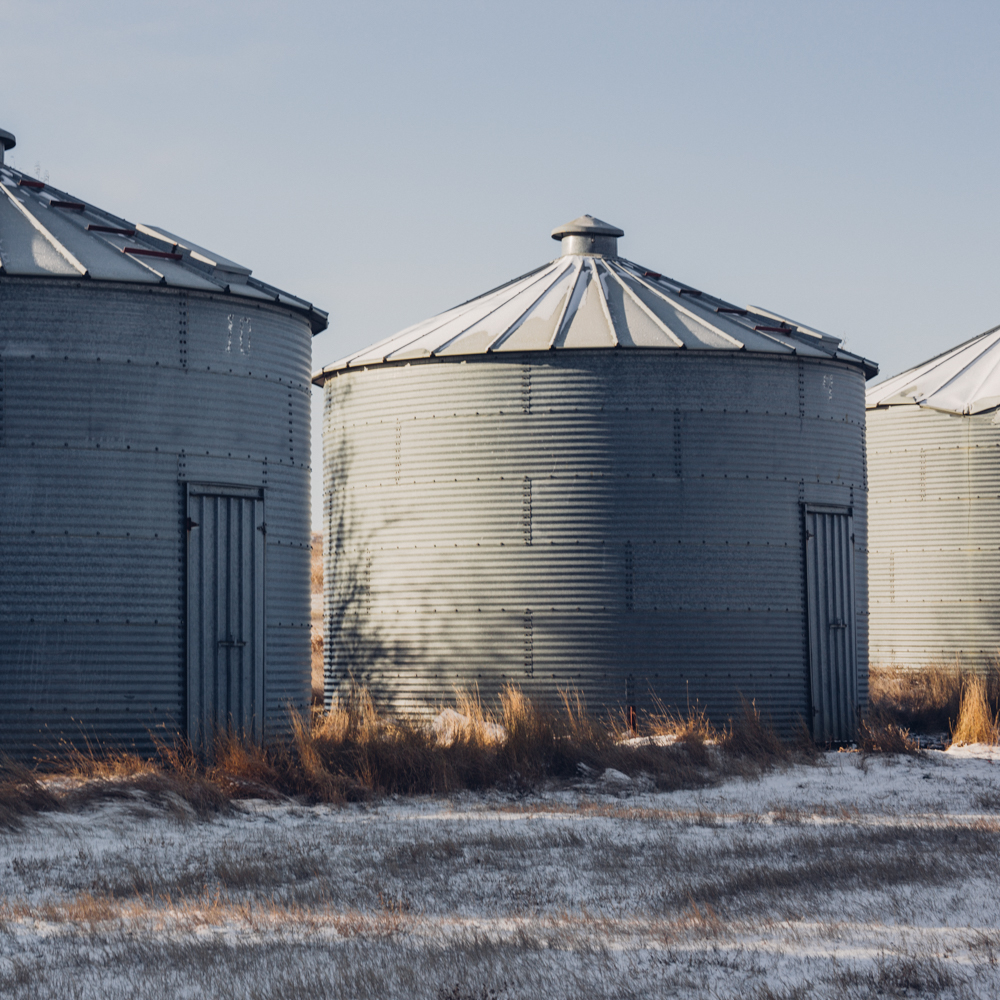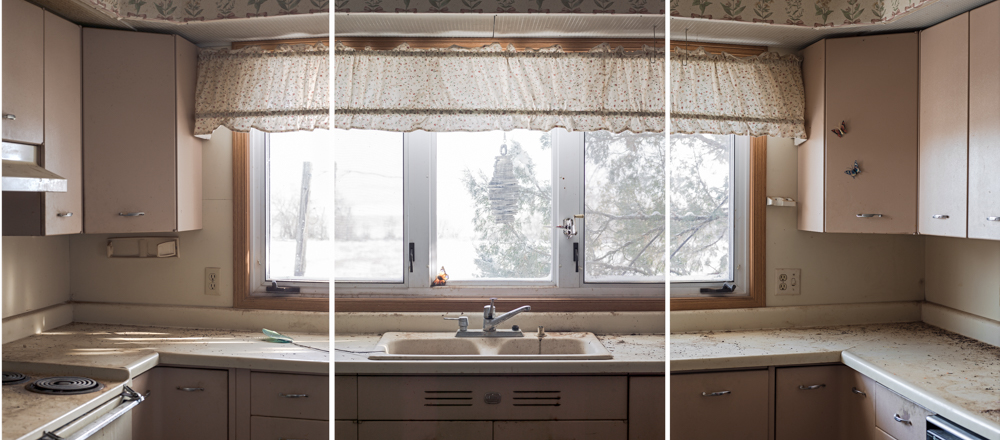Amanda Breitbach is a photographer and multi-media artist whose research focuses on the complex relationships between people and land. She completed her Master of Fine Arts degree at the University of Nebraska-Lincoln in 2016 and is currently a lecturer in art at Truman State University in Missouri as well as the program coordinator for Art at Cedar Point, a program that blends art and science at UNL’s biological field station near Ogallala, NE.
Breitbach grew up on a family farm and ranch in eastern Montana and attended Montana State University, graduating in 2004 with degrees in photography and French. Following graduation, she was an agroforestry volunteer with the United States Peace Corps in West Africa for two years. Prior to attending graduate school, she worked as a newspaper photographer/reporter and as a freelance writer for five years.
She was selected to be a graduate fellow at the Center for Great Plains Studies from 2014-16 and received a national fellowship from the Joy of Giving Something Foundation/Imagining America in 2014. Breitbach was also a founding member of the UNL Social Practice Coalition, a collective of artists and activists interested in blurring the lines between art, performance, political activism, community organizing, and environmentalism, and has curated several group exhibits focusing on gender and social justice. Her work has been exhibited at the Great Plains Art Museum, the Eisentrager-Howard and Prescott Galleries in Lincoln, Nebraska, the Rourke Gallery in Moorhead, Minnesota, the University of Kansas Art and Design Gallery in Lawrence, the Clarridge Gallery in Bellevue, Washington, Waterworks Gallery in Miles City, Montana, and the Emerson Cultural Center in Bozeman, Montana. A solo exhibition of her project, Land/People is scheduled for exhibition at the Bone Creek Museum of Agrarian Art in David City, Nebraska in 2017.



For non-landbased people, land is an idea. For landbased people (those fortunate enough to maintain their places or unfortunate enough not to be able to leave them), it is the concrete epitome of experienced reality. Land is an amalgam of history, culture, agriculture, community, and religion – incorporating microcosm and macrocosm – the surroundings farther than the eye can see, and the living force of each rock, blade of grass, small animal…
– Lucy Lippard

Until the turn of the 20th century, nearly half of the U.S. work force farmed. Today, less than 2 percent of the U.S. population works in the agriculture industry, and fewer than 20 percent of Americans live in rural areas. Those numbers have consistently fallen over the last 100 years, with the result that the average American is increasingly isolated from land. Urban populations consume more food, energy, and goods than rural ones, and citizens in cities can be unaware of their connections to and dependence on the earth for food, water, and energy. Even rural residents are often removed from food production as agriculture becomes more mechanized, requiring less human labor but higher inputs of money, fertilizer, and herbicide to produce ever higher yields of commodity crops raised as livestock feed or for fuel rather than food.


My thesis project, Land/People, investigates the decline of family farming and the emotional and spiritual issues that underly the eroding human relationship to land, making larger, universal relationships visible through my family’s and my own experience.
The project combines panoramic and aerial images of my family’s farmland in eastern Montana with intimate photographs of family members and domestic spaces. Many of the images are visibly constructed, using multiple photographs with exposed seams and overlapping edges to create a sense of multiple perspectives or shifting truths. By using multiple photographs to create a single image, I suggest that no single view is adequate to capture the entirety of this vast landscape and the complex culture that depends on it. Each image can offer only a partial view, one piece of the larger picture. These formal elements also remind the viewer that these photographs are constructed – not transparent or objective, but carefully framed and presented by a particular person with a specific point of view. They deliberately call attention to my own perspective – my view of/movement through/representation of this place from the position of an insider to rural culture, with a deep love and respect for both land and the people who work it.
Large, multi-panel panoramic works like Pemmican Rocks and Swallows in CRP invite the viewer to have an immersive experience of place, offering a close, detailed view that depicts the richness and diversity of a landscape often described as empty or barren. Aerial views of farm fields, badlands, cattle, wildlife, junk yards and farm buildings reveal traces of the past and present, the land as a palimpsest of human and animal use. Displayed in a large grid, these aerial photographs reference the Jeffersonian grid, a rectangular survey system that was used to understand, map, and market the American West to homesteaders like my ancestors. That framework, formed at first by imaginary lines, has over the last 100 years become real, visible from above as an enormous quilt of square fields and round irrigation pivots. The grid is a visual representation of our culture’s attitude toward land, an attitude of ownership and control imposed both abstractly and physically, through fences, roads, and field boundaries. I worried at first that aerial photographs would say the wrong thing – that they would imply that I had power over the land by viewing it from above. But I found instead that the images give us perspective. They visualize the vast scale of this landscape and the relative tininess of human beings.
Photographs of interior spaces and portraits contrast with the landscape in meaningful ways: in scale, intimacy, and in their sense of time and impermanence. Two triptychs, Homestead House and Kitchen Sink, echo and amplify each other, speaking of history, “progress,” and the tenuous nature of agriculture in an arid landscape. Both of these images show empty, abandoned structures – one the homestead cabin built by my great grandfather, the other a home my grandparents lived in together for more than 50 years. Together, they speak of our family’s past in this place as well as its future, foreshadowing the time when we too will be gone and my family may no longer farm this land. A recurring motif of windows developed importance in the project, connecting interior to exterior and allowing us to see domestic space and land within the same frame. Viewers are invited to look both into and out of frames that emphasize the relationships between the spaces inside and those outside and to move between those places. Panes of glass again form grids, referencing both the surveyor’s grid and the selective construction of the view.




House Made by Hand, a large digitally constructed collage, combines all of these ideas. Individual photographs of waving grasses, sky, and a slowly collapsing house layer to build a complex image of past and present. Movement and color shifts between exposures demonstrate the passage of time and the process of change, circling back to ideas about the partial view. Visually, the piece forms a broken or exploded grid, exposing the dissolution of family farm ownership and deconstructing the historic grid of land ownership.







The framing of these views reflects my personal experience as a woman who grew up on a multi-generational family farm and ranch owned and operated by men, developing a deep love and respect for the land while knowing that I would never inherit it. All of the photographs were taken on my family’s land over the last two years. It is my position as an insider to this culture that sets my work apart from other art about agriculture. By exploring a single farm and family in depth I intend to tell a complicated and specific story, one that reflects the changing nature of agriculture and critically questions its future. I am creating what may be the last images of a farm in slow decline. Photographs of equipment that no longer functions, homes that no longer house families, and two aging men doing all of the farm work tell the viewer that the farm’s heyday is past. There are no children in my photographs, because there is not a next generation interested in running the farm. The sorrow and grief in those images is contrasted with the magnificence of the sublime, high plains landscape. Vast and open, the prairie is not empty, but is instead what author William Least Heat-Moon calls, “a paradigm of infinity, a clearing full of many things except boundaries, and its power comes from its apparent limitlessness.”



The project has given me a unique opportunity to come to terms with my role within the family and my personal obligation to the farm. It has become an elegy for all that we are about to lose and a meaningful celebration of the place we have had the good fortune to call home.
To view more of Amanda’s work, visit her website.